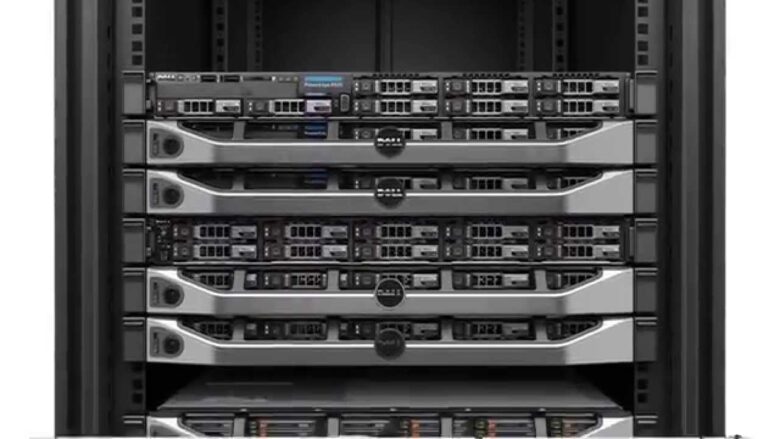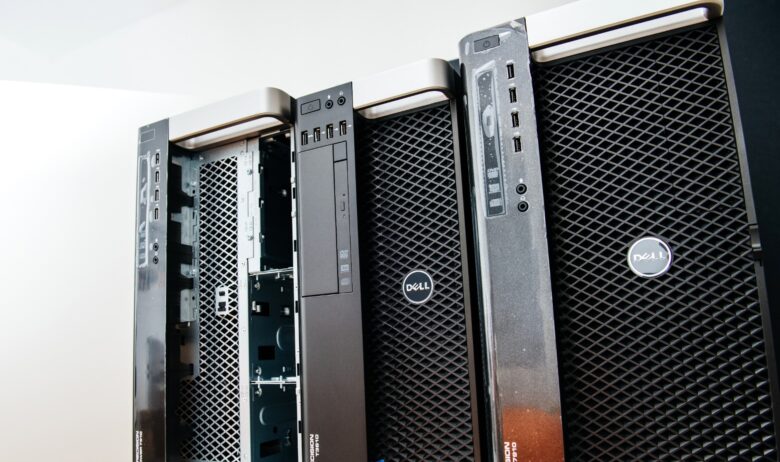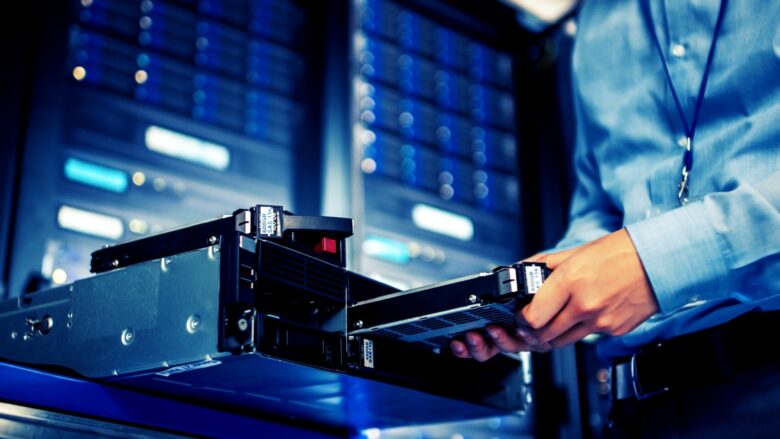Serve racks and cabinets are specialized constructions that allow for housing dozens of network devices and allocate large systems effectively.
As it becomes clear from the name, such furniture pieces are designed to accommodate servers, other active equipment and supporting accessories.
Contents
Benefits of Server Accommodation in Racks

Source: recompute.com.au
Is there a difference between placing equipment on tables, bookshelves or in special cabinets? Let’s list the main advantages of using server furniture for hardware accommodation:
- Equipment protection. Cabinets are made of durable metal sheets that guarantee hardware reliable carrying. Vertical posts are durable enough to support equipment. Solid enclosures prevent devices from all sorts of external threats, including environmental issues (dust, sunlight, temperature, and moisture), intentional damages, shocks and other injuries. Hardware racks ensure safe and durable equipment storage.
- Cable management. It is easy to connect equipment to any unit and a power supply source. Server cabinet accessories allow for organizing wires properly, keeping them in order, and avoiding tangling. Technicians can adjust cable length, sort them according to heat and power characteristics and identify, label and arrange them in bundles.
- Airflow management. Cabinet constructions are equipped with holes for fan installation. Side panels are perforated. Thus, it is possible to adjust optimal climatic conditions and set sufficient airflow to cool down devices.
- Dust protection. Enclosed bodies prevent dust and debris from piling inside the computer. Tiny particles that fly in the air cannot settle on hardware, which minimizes the risk of overheating due to dust accumulation.
So, the benefit of using such network equipment is evident. If you want to order a computer server rack, visit the website https://sysracks.com/. A wide range of models of any construction, size, and type is provided. Managers help select an appropriate option according to client’s demands.
Things to Keep in Mind before Installing a Server Rack

Source: racksolutions.com
Before you buy a furniture piece for your office or data center, make sure to learn how to install server rack. Here are the main points to take into account at the stage of model selection:
- Rack dimensions. Here, three main parameters are important. These are width, depth and height. Three common types of width are offered to allow for fastening of most types of servers and active hardware. Depth is adjustable due to the movable rear side of the cabinet. Height is the most troublesome issue since it requires taking exact measurements. Height is measured in U (1 unit). 1U takes 1,75 inches of space. Thus, calculate the required height and keep in mind that devices should be located loosely to avoid overheating and create the possibility of future extension.
- Server compatibility with a rack model. Sometimes furniture is not compatible with devices due to different types of fasteners, sizes, widths, etc. Before you buy the rack, make sure that it fits your hardware.
- Types of holes that cabinets have. Examine an enclosure for available holes. If you need to install fans, check slots for fans. Also, consider cable routes.
- The need for shelves or rails. Consider whether you need to install mounting rails and sliding shelves.
Select a suitable rack based on these points. This will help verify your choice and avoid many failures in the future.
Ways to Mount the Server in the Rack
Now, let’s consider how to install server in rack. Technicians distinguish between two different ways to do this, namely, horizontal and vertical installation.
Horizontal mounting is suitable for PCs, the width of which does not exceed 17.7”. In this case, they perfectly fit a standard rack width and can be fastened to the chassis.
However, if a PC does not fit the server horizontally and its width is more than 17.7”, system administrators should attach it vertically. In this case, two PCs can be accommodated on one shelf side by side. But, check whether the shelf load capacity is enough to support two hardware pieces.
How to Install Equipment into the Rack?

Here’s a step-by-step guide on how to install a server into a rack. Compliance with this sequence of steps will ensure correct and reliable assembly.
- Mount the server rail or shelf in the rack. You’ll need brackets to attach rails or shelves to the rack body. Choose a suitable height since vertical posts have many holes for fastening.
- Insert an inner rail into the server using shoulder screws (for server-specific rails).
- Slide the PC into the rack.
- Install a thumb screw if using a compatible server.
This operation takes a few minutes. But it is still important to properly the fastening of the shelf and make sure that the rails are securely fastened.
Other Important Issues to Take into Account
When dealing with the issue of how to rack a server, you should also know how some supplementary tools can simplify its work. Here are some useful tips that will help make the system and rack more functional, convenient and accessible.
- Cable management. When dealing with sliding shelves, note that the cable length should be adjusted to avoid server disconnecting when the shelf is put out of the cabinet. Cable management arms are used for this. These are L-shaped constructions that adjust the cable length automatically keeping system feeding. Additionally, hooks, ties, organizers and vertical/horizontal managers (boxes) are used to keep cords in order and avoid tangling.
- A KVM switch is a device that allows connecting a keyboard, a monitor and a mouse to several PCs at once and controlling them by switching between them one by one. The number of computers in this case depends on the capabilities of the switches themselves.
- A PDU is responsible for powering an entire system. Here, it is important to find the PDU that will be able to power your system, i.e. be powerful enough to feed all the components. PDUs have different power characteristics. Thus, technicians must select a suitable PDU, depending on the required power. Also, it is advisable to use an alternative power supply unit in case of emergency outages.
- Proper cooling is a vital point for any network system since equipment tends to emit much heat. If a cooling strategy is chosen incorrectly, devices will quickly overheat. It results in downtime, failure and datum loss. Enclosures usually have holes for fan installation. If you have a separate data center, it is recommended to use open-frame racks that do not impede the air from circulation through equipment.
Additionally, you can use front and rear stop brackets to limit shelf movements and prevent PCs from falling down. Anti-slip mats are applied to avoid a slipping effect.
Server racks are found in all data centers today. The model catalog is huge, so it is important to choose a rack model correctly to install servers properly. Although the installation procedure is not complicated, the selection of a fitting product requires due attention. In most cases, equipment is attached to shelves or rails. Check racks’ load capacity to make sure that they will be able to carry your server.
